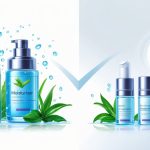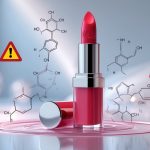Foundation Claims Beauty Editors Quietly Separate From Real Results
Ever notice how every foundation screams about “X percent hydration” or “48-hour wear,” and then by lunchtime my face looks like I never bothered? I mean, I’m not the only one, right? Beauty editors—yeah, the same ones who write those glowing reviews—will admit after a couple drinks or when their concealer refuses to blend, that most foundation claims are just… kinda wishful thinking. Like, six out of ten launches (and yes, I’m looking at you, Dior foundation) promise hydration for days, but hyaluronic acid only works if the air isn’t bone dry. That’s science, apparently. My derm calls foundation ads “chemistry with a side of fantasy.” I wish she was exaggerating.
And here’s the kicker: editors keep testing the same formulas, trading notes on “glowy finish” and “real skin effect,” but my face still flakes under those evil fluorescent office lights. I read about “second skin” foundations like Glossier’s Stretch Fluid Foundation, but my hyperpigmentation photobombs every single Zoom call, no matter how many miracle peptides brands cram in. Even No7’s “hydrating” formula? Still cakes around my nose when summer rolls in. Why don’t bottles just say that? And don’t get me started on SPF—more of it, and suddenly my face looks like a ghost in flash photos. Someone explain?
Understanding Foundation Claims

Picture this: I’m standing in front of a wall of foundation bottles, every single one yelling “matte,” “hydrating,” “buildable”—and my brain just checks out. Nobody warns you that “second skin” means one thing at 11 p.m. under LED bulbs, and something else entirely after a sweaty subway ride. Claims are all over the place and honestly, they rarely line up with what anyone actually wants their skin to look like. Or maybe I’m just picky.
Decoding Common Claims
Matte finish, buildable coverage, weightless feel? My drawers overflow with “weightless” formulas, but my nose still feels like sandpaper. “All-day wear” is on every shelf, but if you squint at the fine print, it’s always something like “tested for 8 hours on 20 people in a lab.” Eight hours? Not even a full workday. Brands just swap buzzwords—“waterproof,” “pore-blurring”—and barely ever show real numbers or methods. I mean, when’s the last time you saw a foundation box with actual data?
And here’s a joke: I’ve seen the same matte foundation marketed as “hydrating for winter” and “oil control for summer”—sometimes in the same month. The beauty industry knows we buy based on vibes, not evidence. Ingredient lists? Might as well be in hieroglyphics.
Marketing Language Vs. Scientific Accuracy
Here’s what bugs me: “clinical” means nothing now. I met a chemist at a launch who straight-up told me “dermatologist tested” just means a derm saw the product, maybe, or scrolled past an email. “Hypoallergenic”? Even the FDA shrugs at that. Trusting a foundation ad feels like buying a used car from a magician.
“Blur technology”—sure, but where’s the proof? Most studies are brand-funded, ghostwritten, and never published anywhere legit. I once found a study cited by a big brand and it was about floor polish, not makeup. Reviews? They’re either influencer fluff or just random anecdotes. I don’t know who to trust.
Why Beauty Editors Highlight the Differences
It’s chaos. Beauty editors like me get bombarded with “miracle” foundation requests, and I end up breaking it to people that “24-hour wear” is mostly marketing. There’s this unspoken rule: treat PR samples like Schrödinger’s Cat—maybe they’re genius, maybe they’re cake frosting. Last week, our group chat spent hours debating if “buildable” just means “patchy until you overdo it.” No one agreed.
Industry watchdogs figure only about 18% of cosmetic claims are legit by independent standards. I know editors who keep spreadsheets of which brands over-promise every season; it’s basically a game now. In the end, the only real test is wearing foundation to a friend’s wedding and waiting for someone to comment on your skin—or your shade mismatch.
Why Real Results Matter More Than Claims

Still can’t get over how brands crank out “24-hour flawless” claims while somewhere a makeup artist is scraping foundation off a model’s face between takes. I’ve watched foundation break up before lunch, forget 24 hours. Real skin isn’t a lab: there’s oil, dry patches, hormonal chaos, random rashes that come out of nowhere.
Performance On Different Skin Types
Let’s see—how many times has a “hydrating foundation for dry skin” left me with tight, flaky spots I didn’t know existed? Oily skin formulas? Sure, matte for five minutes, then my T-zone could signal aircraft. Sensitive skin? Most brands don’t even try. “Fragrance-free” doesn’t help when the pigment oxidizes and I break out in hives.
A dermatologist friend (Dr. Lee, who has a graveyard of “dermatologist-tested” samples in her office) pointed out that real-life testing is a joke—brands ignore heat, humidity, masks, stress, all of it. Even the so-called performance claims don’t prepare you for daily chaos. Makeup artists end up mixing two or three formulas, testing on actual breakouts, not some mythical “combination skin.” I’d trust patch test data by skin type a hundred times more than “universally flattering” marketing. Why don’t brands ever show that?
Longevity and Wear Tests
Numbers everywhere: 8-hour, 16-hour, “transfer-proof.” But by 3 p.m., my concealer’s vanished and my chin’s naked. I bought an “all-day” matte foundation for oily skin—lab results all over the box—and my nose was a disco ball by mid-afternoon. Longevity tests? Always in perfect lighting, with pro powder, no sweat, no masks, no real life. Where’s the test for three coffees, two breakouts, and a sweaty commute?
I did my own test once—half my face with primer, half without, both with every “pro-long” fixative the brand could throw at me. Makeup artists backstage will literally time product breakdowns on their phones and attack with setting spray. Real life means humidity, friction, surprise pimples—none of which show up in those glossy reports. If a foundation survives a 10-hour shoot, I believe in it.
Consumer Experience and Reviews
Read enough reviews and you’ll see it: product claims live on another planet. Five stars at Ulta don’t mean much if people with acne-prone skin keep breaking out. Reddit’s full of stories about “hypoallergenic” formulas triggering rashes, and pro artists toss bottles after one bad shoot. Honestly, I trust random strangers on the internet more than celebrities. Sometimes the best review comes from a nurse who wore “sweat-proof” makeup through three ER shifts and posted before-and-after photos. If foundation can’t survive a Tuesday, all those claims are just noise.



